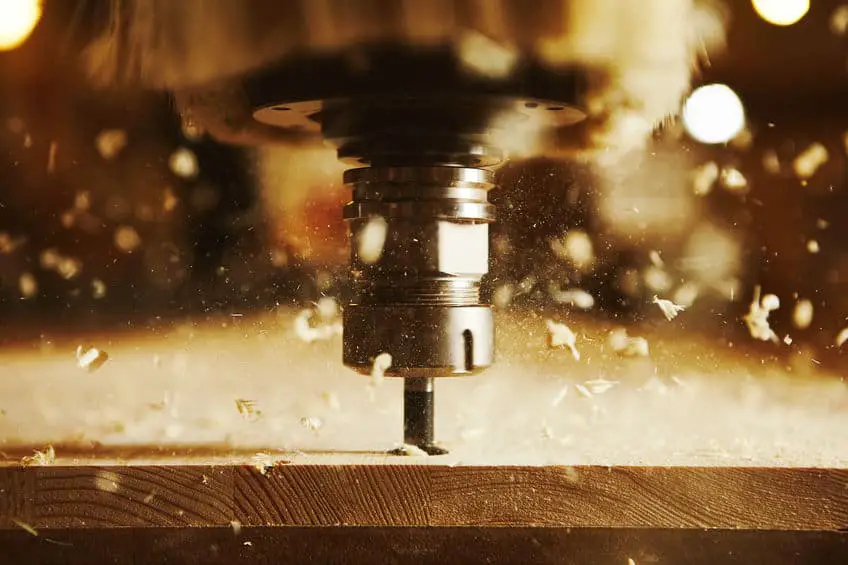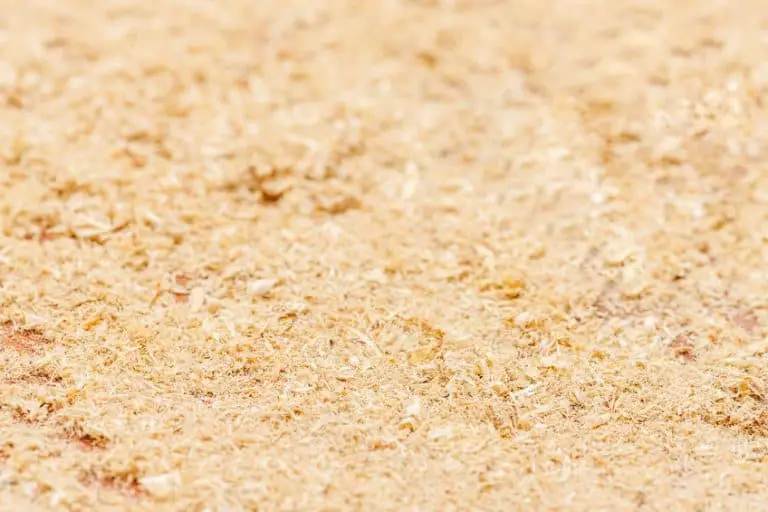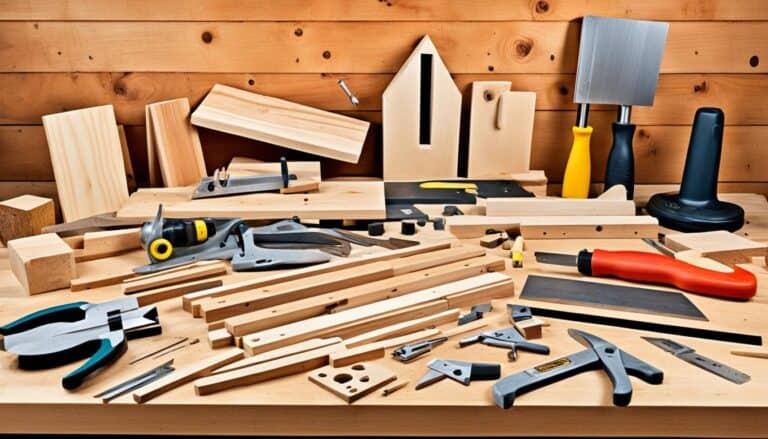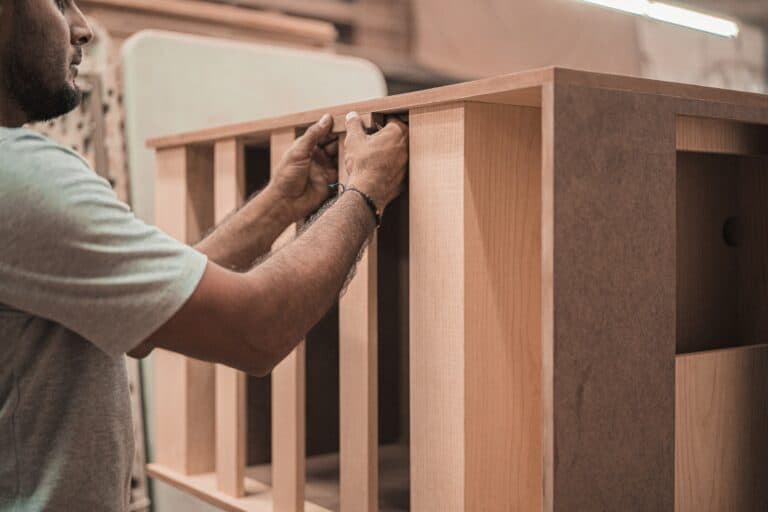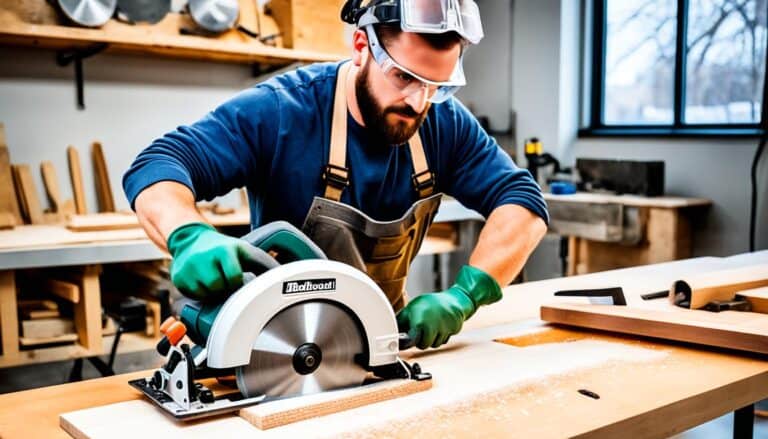Choosing the best wood for your wood sign can be a difficult decision. During my research, I looked at several options which would provide me solutions. With so many options of wood for my wood sign projects, I needed to narrow down my options.
Picking your wood for your wood sign is critical. The selection of the wood determines the purpose of the routed wood sign. If you are just beginning, pine is a great selection, fairly inexpensive, and plentiful. For more experienced wood sign makers cedar or redwood is an excellent choice.
Choosing your wood for your routed wood sign is a big decision. What purpose will the sign serve? For example, will the wood sign be an outside wood sign or an indoor wood sign? Looking at these questions determines a few of the reasons for determining the best wood for your wood sign.
Determining The Best Wood For Your Wood Signs
There are a lot of considerations when determining what wood is best for your routed wood sign project. Cost, indoor, outdoor, and purpose are a few of the main considerations.
Purpose
The purpose of your choosing your wood for your wood sign is very important. What is the final product you are wanting to create? What purpose will the wood sign serve? Where will the sign be placed, indoor or outdoor? Which sign will route well?
The proposed final product mostly determines the best wood for your routed wood sign. Different species of wood will have different appearances when complete. Color, grain, and how the wood accepted the paint are considerations.
The final placement of the routed wood sign is also key to determining the best wood for routed wood signs. Different woods react differently to the elements of weather. Will the sign survive the elements, despite your best efforts to primer, paint, and seal. If you would like more information on the best wood for outdoor wood signs you can read – “Outdoor Signs – What Is The Best Wood?”
If you are placing your sign indoors you can use other types of woods and actually the selection is bigger than for outdoor applications. This is due to the weather elements. With indoor routed wood sign applications you do not need to worry about the wood being penetrated by rain, snow, and sunlight.
Will the router and the router bit be able to carve clean, without splintering or gouging the wood. This is critical due to the final product of your routing wood sign. This is also key to determining the best wood and material for your routed wood sign.
Before Buying – What You Look For
When you go to get your wood for your routed wood sign there are several things you need to review with the wood selection. Things you need to know about the piece of wood prior to purchase.
Appearance – A good piece of wood for your routed wood sign should have a clean appearance as possible. Does the wood have mold or marking which will detract from your purpose?
Wood Warping – Warping is a deviation of the flatness of the wood. This is typically caused by the amount of moisture in the wood and the drying process of the wood. There are several types of warping.
- Bowing – A warping which is on the face of the wood
- Crook – A warping which is on the length of the wood
- Kink – A warping more local affected by a knot
- Cup – A bow along the width of the wood
- Twist – A displaced warping which is not even across the wood
Knots – Knots can be an attribute and blessing or your worst nightmare. Consider the knots on the wood. Will they be in the place where you are going to be routing? Do the knots have splits? If so, can they be fixed with epoxy resin?
Size – The size of the wood for your routed wood sign is critical. Is the size of the piece of wood big enough for the purpose of the project your routing. Sometimes you may purchase a little bigger piece to allow for avoiding a knot or warping or because you want multiple routed wood signs.
These are a few of the things which need to be considered when looking at wood to purchase for your routed wood sign.
If you would like to see what products I’m using and purchase you can see my recommended products here – “Recommended Products“
Cost Of Wood For Your Routed Wood Sign
The cost of wood for your routed wood signs varies on the local economies. You can go to your local hardware stores and get your wood there. This is a very viable option. Your cost will be calculated by a standard cost per piece of wood. However, you will be limited on your availability if you want exotic wood.
If you want more of a milled wood (typically thicker) and more selection of wood for your routed signs you will need to search out a great wood supplier. The biggest difference in buying at a mill versus buying at your local hardware store is you will be purchasing by Board Feet (BF).
There are many mills in the local area if you look and you can work with the mill to get great deals on wood. If you are wanting a good base price guide for wood I recommend you visit the link below to “The Lumber Store Of North Carolina – Lumber Prices” not only as a reference but for considering a purchase.
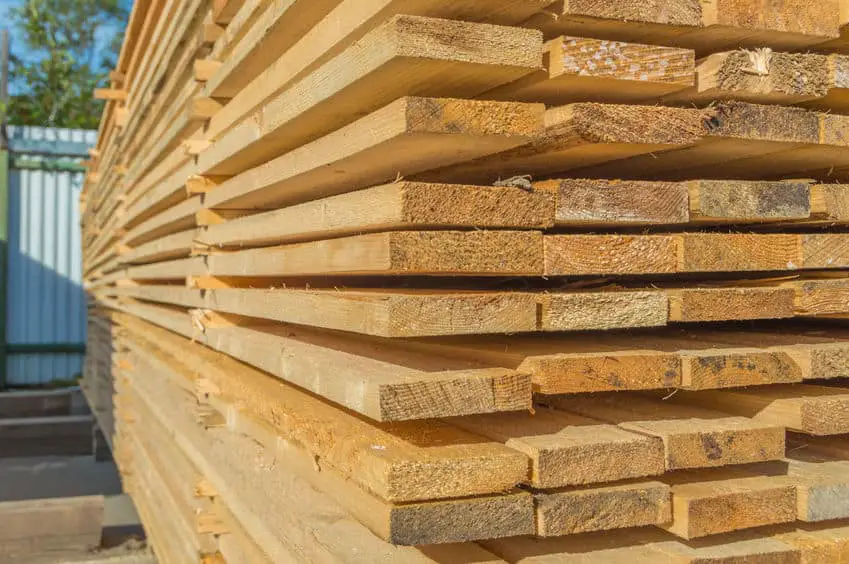
Storing Wood For Your Routed Wood Signs And Weather Environment
Storing your wood for your routed wood signs is key to success. As mentioned above if your wood is warped it provides challenges to routing your wood sign. I wanted to provide some information regarding this as it is very important.
Why are we concerned about storing our wood for our routing wood signs? The purchase of wood is an investment and it costs a lot depending on the species of wood you use for your routed wood. What are the basic considerations for storing your wood for routing wood signs?
- Cut you lumber in lengths which are manageable for your space
- Stack your wood with separators at even lengths to best support the wood
- This allows air to circulate between the wood and allow to completely dry (if Moisture Content is about preferred 6-8%)
- The goal is to prevent warping and cracking which eliminates the ability to use the wood for routing wood signs
If you want to know more information regarding preventing wood cracks or splitting you can read out post – “Wood Sign Crack Split Prevention Spreading Repair“
Carving Your Wood Sign With A Router Concerns – Basics
When considering your purchase of wood for your routed wood signs how the wood will carve with a router is key. Most wood will work well with a router. However, there are a few concerns you need to look at.
- Splintering – Some species of wood will splinter when carved with a router. This is due to the strong grains in the wood. You can avoid the splintering by ensure you use the correct speed and a sharp bit on your router.
- Gouging/Tear- Out – Basically Gouging or Tear-Out is when the router bit tears out material of the wood. This commonly happens when routing cross grain, turning corners or attempting to take out too much material at one time.
- Paint Bleeding – When painting your routed wood sign the choice of wood can increase the capability of paint bleeding. Paint bleeding is when the paint penetrates the grains around the router carved lettering or images. It can be prevented by using a sanding sealer applied prior to painting the lettering or images carved by the router.
Where to Buy Wood For Routing Wood Signs
There are many places to find wood for your routed wood signs. Some of them will be free and some of them will need to be shipped due to the specificity of the wood. No matter where you go you will need to get wood for your routed wood signs.
During my research, I discovered many places to get wood for my routed wood signs. I have broken out below some resources which you may consider.
Beginner Low And Higher Budget
If you are just getting started and are working on a low budget there are resources you can use to get the wood for your routed wood sign.
Free – Local businesses usually have shipping wood outback of their business. These come in the form of pallets or shipping types of wood. Check-in on local businesses and ask if they are willing to give you the wood. Beware – Do not just assume the wood is free to ask the business.
Additionally, there are places on Craigslist and Facebook Market that have wood they would like to get rid of. Check out these resources. Lastly, your family or friends may have or know someone who has extra wood they may want to get rid of.
Low Cost – If you don’t have the tools or resources to cut and finish your wood you can buy your wood for your routed wood sign pre-finished. These are available at your local Michael’s or Hobby Lobby. The size may be limited but they already are cut and some have finished edges.
Lowes and HomeDepot are good resources for typical wood for your routed wood signs. They sell per piece (Not by Board Foot (BF)) and is a great place to start.
High Cost – If you are more experienced and finish your own wood for your routed wood signs Mills and wood suppliers are an excellent choice. You may pay more for the wood however, they provide more exotic species of wood and choices of sizes. They typically sell by board foot (BF) and provide more options for wood for your routed wood signs.
**All business names and trademarks mentioned are registered and owned by their respective business
Different Types Of Wood For Routing Wood Signs
There are many species of wood that you can use for your routing wood signs. I thought a good overview of the basics of wood and its purpose would be a good idea as it can be very confusing.
Full Size And Dimensional Wood
When you visit your local hardware store or lumber yard you will discover many sizes of wood for your routing wood sign project. Depending on the species or type of wood they come in different shapes and sizes. I wanted to give you a guide of typical sizes.
This is important due to the storage area of your wood shop, the capability of the vehicle to carry, and the ability to overcome the sizes of wood which can be very heavy or big in size depending on species or type.
| Species or Type | Typical Size | Weight |
| Plywood | 4 ft x 8 ft x .75 in | Medium to Heavy |
| Pine | 4,6,8,10,12 in x 6,10,12, 16 ft x .75 in | Light |
| Cedar | 6 ft x 6 in x .50 in | Light |
| Redwood | 4,6,8,10 in x 6,10,12, 16 ft x .75 in | Light |
| MDF | 4 ft x 8 ft x .75 in | Heavy |
The above chart doesn’t depict all the sizes just the most common sizes you may encounter. If you don’t have a vehicle that can haul a large size piece of wood you can have the hardware cut down the size of the wood.
Dimensional Wood – Dimensional wood is wood pre-cut down to project sizes. It mostly is the plywood and MDF types of wood.
| Type | Pre Cut Size | Cut Size |
| Plywood | 4 ft x 8 ft | 4 ft x 4 ft or 2 ft x 4 ft |
| MDF | 4 ft x 8 ft | 4 ft x 4 ft or 2 ft x 4 ft |
These are great if you don’t want to pull down or carry in your vehicle a giant 4 ft x 8 ft piece of plywood or MDF. However, I would suggest caution because these pieces of wood are more expensive versus the pre-cut size. A good recommendation would be to have the hardware store remove from stock and cut down to your size, and they typically will do this for free.
Solid Wood – Hardwood And Softwood
Hardwood – Hardwood is typically your more exotic wood for your routing wood sign project. These include your Mahogany, Walnut, Cherry, and the most popular Oak. These are popular for specific routed wood sign projects which provide a specific appearance. Hardwood has longer longevity due to the tight grains and durability of hardwood. Hardwood is typically more expensive but worth the routed wood sign project. Lastly, hardwood is harder on your woodworking tools. It dulls saw blades and router bits and can increase your cost.
Softwood – Softwood is the more popular type of wood and an excellent example is a pine. Pinewood is very soft and easy to use and cut. It is the best wood to use for your routed wood sign due to the fact it is fairly inexpensive, not hard on your woodworking tools, and flexible for your routed wood sign designs.
Plywood
To my surprise plywood seems to be a mystery wood for routed wood signs. It is used by many wood sign creators for many purposes. What is plywood? Plywood is a cross-layered board with multiple small manufactured pieces of the species wood glued together.
Plywood comes in many species such as Baltic Birch. They also come in sanded and un-sanded versions. It is very strong and very durable. The challenge with Plywood to routed wood signs is carving with a bit and the edging.
Routing wood signs with plywood is a very viable solution. Ensure you use a sharp bit with the correct speed on your router. This helps prevent burrs and splits when carving. The next challenge for plywood for routed wood signs is the edges. The plywood edge is not exactly attractive. I typically paint the edges black which overcomes this problem.
MDF – Medium-Density Fibreboard
MDF – MDF is also a very viable solution for routed wood signs and is used quite extensively by routed wood signs. MDF is similar to plywood in that it is glued together, however wood fibers are used and not a layer of wood. The router and your woodworking tools will really like MDF due to the fact that MDF is very easy to use and not hard on your tools.
MDF has been used on many routed wood signs. It is fairly inexpensive and flexible for many designs. The downside to MDF is the weight and the dust. MDF is very heavy and can be cumbersome to move in your woodworking shop. Additionally, the dust MDF creates when carving with a router or saw is very messy and a health hazard. Use of a respirator is mandatory.
We need to know what the different types of wood are and this video does an excellent job describing the basics.
Recommended Wood For Routing Wood Signs
My recommended wood for routing wood signs is based on my use of the different species of wood. I considered the tools I have at hand, the cost of the wood, and its availability. If you are a beginner the below-recommended wood species are the best.
Pine
Pine is the most available, flexible to work with, and inexpensive for full-size routed wood signs. Routing pine signs are fairly straightforward and the router will not be beat up. The downsides to pine are it is softwood, can warp due to moisture and environment, and can split and crack. Although these challenges are there, pine creates a wonderful routed wood sign with grain and personality. I highly recommend pine for your routed wood signs.
Plywood
Plywood is a great option as well. It is very available, mostly inexpensive, and is not very hard to carve using your router and woodworking tools. The downsides to plywood are it doesn’t give you a lot of flexibility to routed wood sign design. You are pretty limited with what you can use it for. A good example is if you want to route and carve a 3D sign. Plywood does not carve 3D signs very well. Additionally, plywood can create burrs and splits when carving with your router. I recommend plywood, but ensure you know the purpose of your routed wood sign prior to purchasing.
Cedar
Cedar is an excellent choice for your routed wood signs. It is highly available (In the form of cedar planks for wood fencing), very inexpensive, and very easy on your router and woodworking tools. Cedar provides a very nice appearance on the final product. The downside to cedar are you are again limited in the products you can create. Additionally, cedar is very susceptible to weather when using a router to carve as it splits very badly. I recommend cedar as it is a very good option for your routed wood sign and provides a beautiful product.
MDF – Medium-Density Fibreboard
MDF is a great option for your routed wood signs. It is highly available (In different thicknesses and sizes), fairly inexpensive, and really easy on your router and woodworking tools. A lot of wood sign creators use MDF as their primary wood source due to its flexibility for router wood sign design. The downside to MDF is working with edges (It is very fragile), the dust it creates (Can be a health hazard without a respirator and dust system), and does not work very well for outdoor routed wood sign applications. I still highly recommend MDF as a routed wood sign solution due to its cost and flexibility, however, beware of the concerns for dust and health when routing or cutting with your woodworking tools.
If you like the information provided please ensure you Pin the below for this article to Pinterest and also follow me on Pinterest.


